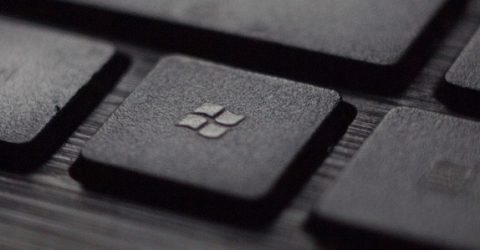A brief history of Windows

It’s been 35 years since Microsoft launched the first version of Windows, and much has changed in the world of computing since then.
In fact, everything has changed.
Although American computing companies registered the first commercial website addresses in 1985, even Bill Gates couldn’t have foreseen the internet’s impact on the world.
The Windows operating system directly inspired the broadband connection that brought you to our website. It may even underpin the computer you’re reading this article on.
Estimates suggest there are over a billion Windows-powered desktop and laptop devices in use today.
That’s despite the fragmentation of operating systems during the 2010s, from Android and iOS to OS X and Chrome – itself a variant of Linux.
However, the Windows operating system remains the best-known OS. It holds 35 per cent of the global market, narrowly behind the all-conquering Android mobile platform.
That’s not bad for an OS which evolved out of the unintuitive MS-DOS platform, and which was born in an age when Prestel and Ceefax seemed cutting-edge.
Windows onto the world
The original Microsoft Windows was a world apart from the instruction-line operating system which preceded it.
MS-DOS required users to type instructions into a blank window before the computer would do anything – even access the contents of a floppy disc or run a program.
Windows wasn’t the first OS to use the graphical user interface (GUI) we’re so familiar with nowadays. Apple got there first in 1984, with its mouse-controlled Mac OS.
The Windows operating system differed in Microsoft’s partnerships with computer manufacturers, persuading them to install Windows as the device’s default OS.
Because most computer users saw a Microsoft logo as their devices booted up, software developers wanted to make Windows-compatible programs.
And despite Apple’s best attempts to break this cycle of dependency, Windows would be the default OS for the next 25 years.
By modern standards, Windows 1.0 looks comical with its primary-colour palette and narrow fonts. But in 1985, where many computer monitors were still mono, it was a revelation.
Some elements have survived to this day, including the iconic Notepad and Paint apps.
A ten-year process of evolution culminated in the launch of Windows 95.
Often cited as the first consumer-oriented version of Windows, 95 arrived at a time when the internet was encouraging people to invest in a home PC rather than just using one at work.
Windows 95 bequeathed other enduring components like the Start menu and the taskbar, while its successor (launched in 1998) included built-in Internet Explorer.
Windows 98 placed the internet within two mouse-clicks. And life would never be the same again.
Hit and miss
From the highly effective Windows 98 onwards, Microsoft entered an unwitting cycle of following a good Windows OS with a bad one.
The unstable and sluggish ME gave way to the much-loved XP, which is still widely used to this day.
XP’s successor Vista had a bloated structure that made it run slowly and deterred people from upgrading. It gave way to Windows 7 – an immediate and enduring success story.
Next came Windows 8, which tried and failed to bring tablet-style convenience to desktop and laptop computers. Few tears were shed when Windows 10 supplanted it in 2015.
And to continue the cycle, Windows 10 has been a huge success for Microsoft, even in an age of platform diversification.
This article was written on a Windows 10 laptop, with almost 70 per cent of Windows devices presently underpinned by the latest version of Microsoft’s operating system.
Interestingly, Windows 7 still commands 23 per cent market share, whereas its successor holds less than six per cent.
And to address the obvious question, there’s no prospect of Windows 11 arriving any time soon.
Microsoft has again copied Apple, who haven’t replaced 2012’s OS X. Windows 10 will be refined and improved as new features and technologies arrive, but it won’t be scrapped.
That’s great news, since history suggests the next version of Windows would probably be a weak one…






